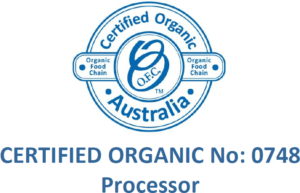Apples, Celery, Strawberries, Peaches, Spinach, Imported Nectarines, Imported Grapes, Sweet Bell Peppers, Potatoes, Blueberries, Lettuce, & Kale.
The benefits of eating organic food go straight to the farm, where no pesticides and chemical fertilizers are used to grow the organic produce shipped to grocers. That means workers and farm neighbours aren’t exposed to potentially harmful chemicals, it means less fossil fuel converted into fertilizers and it means healthier soil that should sustain crops for generations to come.
For individuals, organic food also has benefits. Eating organic means avoiding the pesticide residue left on foods, and it may even mean more nutritious varietals, though research into that subject has yielded mixed results. While there are few if any proven health impacts from consuming trace quantities of pesticides on foods, a growing number of people take the precaution of avoiding exposure just in case, particularly in the cases of pregnant women (growing babies are exposed to most of the chemicals that mom consume) and the parents of young children.
But organic food can cost a little more, that’s what makes the Environmental Working Group’s (EWG) yearly list of the dirty dozen foods so useful. The group analyses Department of Agriculture data about pesticide residue and ranks foods based on how much or little pesticide residue they have.
The group estimates that individuals can reduce their exposure by 80% if they switch to organic when buying these 12 foods.
The USDA and farm and food industry representatives are quick to remind consumers that the government sets allowable pesticide residue limits it deems safe, and the produce for sale in your grocery store should meet those standards. Watchdogs like Environmental Working Group see those limits as too liberal, and see the dirty dozen list as a teaching tool to educate consumers about the benefits of organic food. www.thedailygreen.com
1. Apples: Topping the 2011 dirty dozen list is a tree fruit that always makes the list: Apples. (Apples ranked No. 2 in 2009 & No.4 in 2010) Forty different pesticides have been detected on apples, because fungus and insect threats prompt farmers to spray various chemicals on their orchards. Not surprisingly, pesticide residue is also found in apple juice & sauce, making all apple products smart foods to buy organic. Can’t find organic apples? Safer alternatives include watermelon, bananas and tangerines.
2. Celery: USDA tests have found more than 60 different pesticides on celery. Can’t find organic celery? Safer alternatives include broccoli, radishes & onions.
3. Strawberries: Are always on the list, in part because fungus prompts farmers to spray, and pesticide residue remains on berries sold at markets. Sixty different pesticides have been found on strawberries, though fewer are found on frozen strawberries. Can’t find organic strawberries? Safer alternatives include kiwi fruit and pineapples.
4. Peaches: Another tree fruit that always makes the dirty dozen list is: peaches: more than sixty pesticides have been found on peaches. Safer alternatives include watermelon, tangerines, oranges and grapefruit.
5. Spinach: Leading the leafy green pesticide residue category is spinach, nearly 50 pesticides.
6. Nectarines (Imported): Domestic nectarines don’t test with as much pesticide residue, but overall 33 pesticides have been detected on imported nectarines. Nectarines, at least imported ones, are among the most highly contaminated tree fruits. Can’t find organic nectarines? Try pineapple, papaya or mango.
7. Grapes (Imported): Another perennial entrant on the dirty dozen list, imported grapes can more than 30 pesticides. Raisins, not surprisingly, also have high pesticides residue tests.
8. Sweet Bell Peppers: Another fruit that usually makes the dirty dozen list because it tends to have high pesticide residue (50) is the sweet bell pepper, in all of its colourful varieties.
9. Potatoes: A favourite vegetable is the potato; more than thirty pesticides have been detected. Sweet potatoes offer a delicious alternative with less chance of pesticides.
10. Blueberries: usually make the dirty dozen list, since more than 50 pesticides have been detected. Frozen blueberries are less contaminated. Alternatives like cranberries & cherries, are often also contaminated. For breakfast, consider bananas.
11. Lettuce: Joining spinach in the leafy greens category, lettuce makes the list of dirty dozen foods with the most pesticides (50). Alternatives include asparagus.
12. Kale (Tie) : A superfood, traditionally kale is known as a hardier vegetable that rarely suffers from pests and disease, but it was found to have high amounts of pesticide residue in the past two years. Can’t find organic kale? Safer alternatives include cabbage, asparagus and broccoli. Dandelion greens also make a nutritious alternative.


